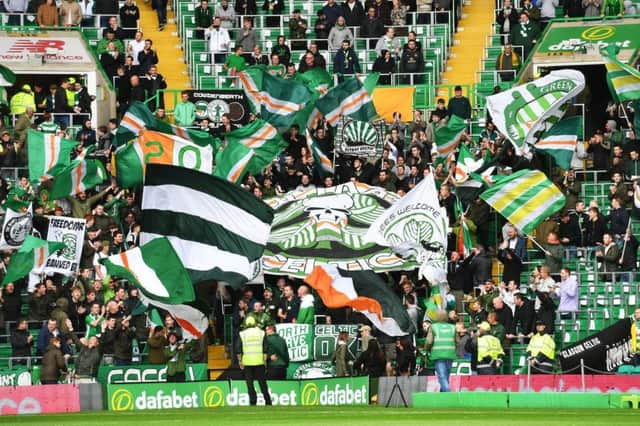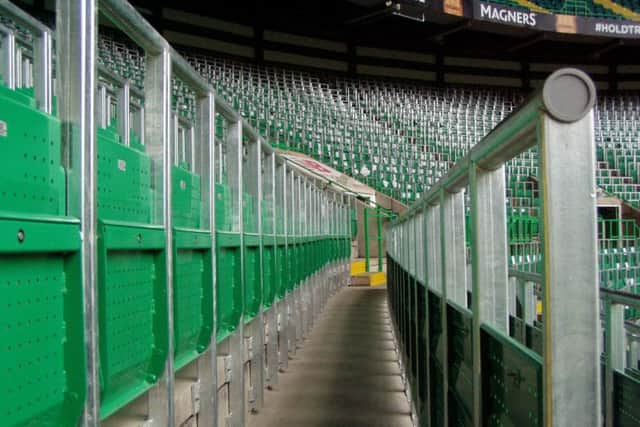Will more clubs follow Celtic and introduce safe standing?


In an American first, the $155m purpose-built home of Orlando City features terraces - long shunned by the biggest grounds in the UK.
It even provides a section designated for supporters who wish to use “smoke devices”.
Advertisement
Hide AdAdvertisement
Hide Ad“Instead of seats, each row has a rail that provides safety as well as a cup holder for drinks,” said a statement on the club’s website.


While the design is far from revolutionary, Orlando fans can now choose whether to stand or sit when attending a match - an option only one top flight club in Scotland currently offers.
When Celtic announced in 2015 it would introduce a “safe standing” section at its Parkhead stadium, it marked a sea-change in approach to large scale football crowd management in Britain.
The technology involved is simple but far removed from the basic concrete steps that passed for terraces until the 1990s.
The railseating system introduced last summer at Celtic Park follows the example used at numerous German clubs, including Borussia Dortmund and Hamburg.


“Across football globally, the reality is that some supporters are choosing to stand at matches,” chief executive Peter Lawwell said at the time.
“This is something we must accept and manage and also understand the positive effect which these areas have on atmosphere at matches.
“Celtic’s primary objective will always be the safety and comfort of its supporters – this new system will now allow fans to stand safely at matches.”
Advertisement
Hide AdAdvertisement
Hide AdThe safe standing section opened at the start of the season and has widely been hailed as a success by fans.
Now the question is whether more clubs will follow Celtic’s lead.
Directors at Aberdeen announced in November the club hoped to introduce a safe standing section at a new stadium it plans to build at Kingsford, subject to approval.
Club chairman Stewart Milne said the club had been watching Celtic’s trial with a keen eye.
But what is about standing that so appeals to football fans?
Gordon Duncan, a board member of Dons Supporters Together, said it led to a better atmosphere and match experience.
“It’s about choice - those who want to stand should have the option,” he said. “The key of course is to ensure safety. No one wants a return to the 1980s.
“I think the section at Celtic has been a success. They’ve done a good job, I would say.
Advertisement
Hide AdAdvertisement
Hide Ad“It’s taken a while to get to this point. I remember being at a demonstration at Aberdeen 10 years ago, led by a company that produces rail seating for German grounds. A decade on and only one club has introduced it.
“But if it’s something that fans want, then more clubs will look to introduce it.”
Standing at top flight football grounds was banned in England and Wales on the recommendation of the 1990 Taylor report on spectator safety.
The inquiry was launched in response to the 1989 Hillsborough disaster which killed 96 Liverpool fans.
But the same laws do not apply in Scotland and the SPL board agreed to relax its previous insistence on all-seater grounds in 2011.
The final decision on safe standing areas lies with local authorities, who can grant permission after consulting with Police Scotland.
Celtic’s safe standing section, which has a capacity of 2,600, was the result of a five year dialouge with the local authorities.